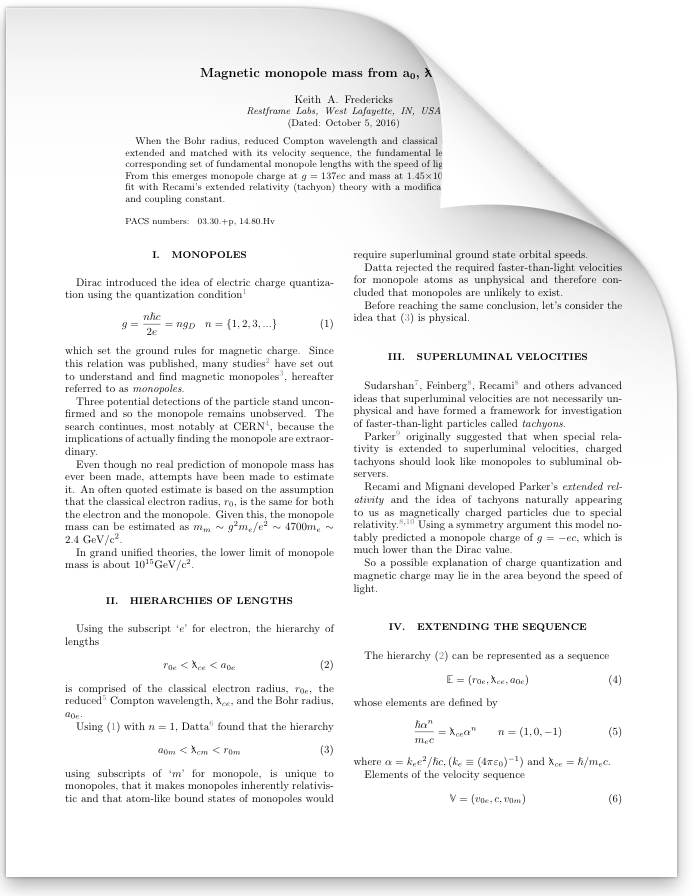papers
2013: Possible detection of tachyon monopoles in photographic emulsions
Certain experiments using photographic emulsions show unique particle tracks suggesting detection of magnetically charged particles with faster-than-light velocities. Particle kinetic energy is estimated from energy deposition and momentum is estimated from track curvature in magnetic fields. On a kinetic energy versus momentum graph, measured values for sample tracks fall in the v > c region. Track curvature is parabolic, which is a signature for monopoles. The plane of curvature suggests electrically charged tachyons detected as slower-than-light monopoles. Particle mass and velocity were estimated. Further study is suggested to broaden this search.
Journal reference: Engineering Physics 2013 (No. 6), 15-45
2013: Possibility of tachyon monopoles detected in photographic emulsions
Low-energy nuclear reaction experiments using photographic emulsions, including those by Urutskoev, et.al, Ivoilov, and others have shown unique particle tracks. Analysis of a sample population of these types of tracks suggests detection of magnetically charged particles with faster-than-light velocities. Particle kinetic energy was estimated from energy deposition and momentum was esti- mated from track curvature in magnetic fields. Measured values were plotted on a kinetic energy versus momentum graph and were found to fall in the v > c region. Track curvature was found to be parabolic, which is a signature for monopoles. Using the classical theory of tachyons, the plane of parabolic curvature suggests electrically charged tachyons detected as slower-than-light monopoles. Preliminary lower limits for particle mass are found. Further study is suggested to broaden this search.
Journal reference: J. Condensed Matter Nucl. Sci. 15, 203–230 (2015)
2017: Magnetic monopole mass from fundamental lengths
With an assumption of n = 2 in the Dirac quantization condition, when the sequence comprised of the Bohr radius, reduced Compton wavelength and classical electron radius is extended and matched with its velocity sequence, these fundamental lengths are mirrored with a corresponding set of fundamental monopole lengths with the speed of light as the axis of symmetry. Monopole charge is g = 137ec and mass is found to be \(1.45\times 10^{-3}\) eV/c \(^2\). This result may fit with the extended relativity (tachyon) theory of Recami with a modification of the proposed charge quantization and electromagnetic coupling constant.
Journal reference: Phys. Essays, 30, 269– 271, (2017)


